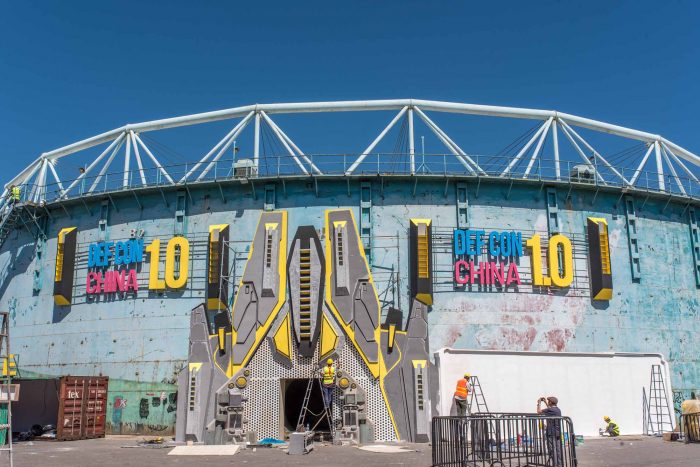Australia and the BRI: Cooperate, compete or challenge

The fraught debate around Australia’s response to China’s Belt and Road Initiative (BRI) was again on show in the lead up to the recent federal election.
Former Australian ambassador to China, Geoff Raby, counselled that the incoming government should more actively embrace the BRI. This was because “Australia has not yet had a credible policy position on BRI” and greater enthusiasm would also help to reset the tense broader bilateral relationship.
In contrast, John Lee, of the Hudson Institute and an advisor to former foreign minister Julie Bishop, warned that a new Australian government should reject any invitation from Beijing to reset the relationship, including by taking a more enthusiastic approach to the BRI. He argued that this was appropriate given the “significant differences” that exist between the two countries.
Both perspectives suggest that the official Australian response to date has largely been to stand apart from the BRI. But the reality is more complicated.
Canberra could point to a long and consistent position that emphasises a positive willingness to engage on the initiative.
Caution rules on the long road to the BRI
In May 2017, then Trade, Investment and Tourism Minister, Steven Ciobo, prior to attending the first Belt and Road Forum in Beijing, said: “Australia supports the aims of initiatives such as the Belt and Road that improve infrastructure development and increased opportunities in the Asia-Pacific region.”
In September 2017, at the bilateral Strategic Economic Dialogue, Australia signed a memorandum of understanding (MOU) with China on cooperation in investment and infrastructure in third countries. Department of Foreign Affairs and Trade secretary Frances Adamson remarked in November 2017 that this “can include Belt and Road projects.” She said the Australian side had also proposed a Trade Infrastructure Working Group to “exchange information about opportunities for collaboration on Belt and Road projects.”
The following month, then Prime Minister Malcolm Turnbull remarked: “We look forward to working with China on the Belt and Road Initiative projects… Global infrastructure investment is a good example of where countries should work together.”
And in November 2018, newly-minted Prime Minister Scott Morrison told Caixin magazine that: “Australia welcomes the contribution the Belt and Road Initiative can make in meeting the infrastructure needs of the region, and we’re keen to strengthen engagement with China in regional trade and infrastructure developments that align within the international standards of governance and transparency.”
Adamson, Australia’s official representative at the second Belt and Road Forum in April 2019, confirmed this stance in a speech at the Australian embassy in Beijing prior to attending the Forum: “Australia’s participation [in the Belt and Road Forum] reflects our preparedness to engage in the Belt and Road Initiative (BRI).”
Yet this positivity has come with limits, and some apparent contradictions.
Australia has resisted signing a more general MOU with China around the BRI, with Prime Minister Turnbull explaining in October 2017 a preference to focus on “specific projects and investments rather than engaging in generalities.” In contrast, in a February 2018 visit to Washington Turnbull announced the signing of an MOU with the US to “support infrastructure investment” in the Indo-Pacific region but with no specifics, no projects, no investments.
This indicates that generalities may not be the real problem. In a November 2017 speech, Adamson spoke candidly of a deeper concern: “The Australian Government is mindful that major economic initiatives can have profound geopolitical effects. This is all the more reason for the Australian Government to think constructively yet clearly about the principles, rules and institutions that underpin an initiative such as Belt and Road given its scale, ambition and complexity.”
And after speaking of Australia’s “preparedness to engage” in April 2019, Adamson followed up with: “Australia wants to strengthen engagement with China on projects that align with international standards of governance, transparency and debt sustainability.” This mirrored Scott Morrison’s comments in November 2018.
Plainly, these are standards that any Australian government should champion – with respect to the BRI or otherwise. The question is how best to do this, while at the same time creating an environment supportive of Australian businesses participating in BRI projects, as many of them are in favour of doing.
Perth-USAsia Centre research director, Jeff Wilson, favour that a straightforward approach would be for Australia to actively engage on the BRI by using the Asia Infrastructure Investment Bank as a standards guarantor.
Another option would be to sign a general MOU with China on BRI cooperation that includes a clear statement of the standards on which Australia’s engagement would proceed.
Instead, the Australian government is opting for an increasingly competitive approach. In June 2018 Bishop said, “What we can do is offer alternative options for countries beyond BRI.” She went on to describe the BRI as “China’s vehicle, so China will also be determining what it believes is in its strategic interests as China looks for greater political and strategic influence in the region.”
Nowhere is calibrating an effective Australian response more important than in the Pacific.
The Pacific is the frontline for Australia
Australia’s Step-up in the Pacific was one of the highest priorities of the 2017 Foreign Policy White Paper. As outlined in DFAT’s ‘Stepping Up Australia’s Pacific Engagement,’ released in November 2018, the Australian Government pitches the Step-up as a response to the long-term challenges facing the Pacific, including tackling climate change and natural disasters, sustaining economic and employment growth, promoting gender equality, preventing disease epidemics and reducing crime.
The importance of this Step-up was solidified in Morrison’s decision to make his first overseas trip in his new term as prime minister to the Solomon Islands in June this year.
By far the dominant feature of the Step-up in financial terms is the establishment of a $2 billion Australian Infrastructure Financing Facility for the Pacific (AIFFP). In April Australia’s Export Finance and Insurance Corporation was given a name change and granted more resources and power to support investment in the region, including through a Trilateral Infrastructure Partnership between Australia, the US and Japan. In June it was reported that an initial project for this partnership would likely be a $1 billion LNG project in Papua New Guinea.
One motivation underpinning this infrastructure focus has been the wide-spread allegations that Beijing is using “debt trap diplomacy.” In June 2018 Bishop asserted: “We want to ensure that they [Pacific islands] retain their sovereignty…that they are not trapped into unsustainable debt outcomes. The trap can then be a debt-for-equity swap and they have lost their sovereignty.”
In March 2019, and less than an hour after being welcomed to Canberra by the Governor-General, the new US ambassador to Australia, Arthur Culvahouse, also warned of China’s “payday loan” diplomacy in the Pacific.
This is an example of a claim where facts matter in formulating an effective policy response. And the claims just don’t stack up. From Africa to Latin America, and most importantly in the Pacific, academic research published in the last year has shown that unsustainable levels of debt are the exception rather than the rule, and that China is rarely to blame. In November 2018, the Australian National University’s Matthew Doran and Rohan Fox concluded: “Our analysis of debt in the Pacific strongly suggests that the ‘debt-trap diplomacy’ argument is without foundation.”
This is not to say that the BRI is problem free. The Asia Society Policy Institute’s report Navigating the Belt and Road Initiative released in June 2019 details the array of problems facing BRI projects across South-East Asia. These range from agreements being pushed through too quickly and without proper assessments of the environmental and social impacts, to financing and debt problems, a lack of local stakeholder engagement, limited local labour employment opportunities, and a lack of transparency and corruption.
As the report makes clear, most of these problems can be traced to problems of weak governance, poor oversight, corruption and the lack of technical and financial capacity in BRI project host countries, rather than directly back to Beijing. Among the numerous sensible policy recommendations that emerge, the report concludes that developed countries should do more to build capacity in these countries, enabling them to “safeguard their communities, environment, economy and other national interests throughout the lifecycle of their BRI projects.”
Working cooperatively in this way with both China and the host countries would seem a logical step and a valuable contribution that Australia could make to promoting positive outcomes on as many BRI projects as possible.
Competing with the BRI also has a place.
The region suffers from a recognised infrastructure gap and the pure economic benefits that competition brings in the form of lower prices and higher quality assets would be welcome.
A growing number of Pacific countries have signed formal BRI agreements with Beijing – including Cook Islands, Fiji, Papua New Guinea, Niue, Samoa, Tonga and Vanuatu – while the number recognising Taiwan over the People’s Republic is dwindling. The Solomon Islands is one of the latter, and is being actively courted by Beijing to join the BRI. If maintaining the status quo in the region with regard to Taiwan and the People’s Republic is what matters most, then Australia’s decision to compete on infrastructure in the Solomons may be warranted – on strategic, if not economic grounds.
There could also be specific projects where an outright challenge – and not just competition – is called for. The decision by the Australian government to inaugurate the $144 million Coral Sea Cable, which will link Sydney to Honiara and Port Moresby, followed warnings by ASIO of the security risks that would be incurred were Chinese firm Huawei to provide it instead. The project had initially been backed by the Asian Development Bank with a British-American company emerging as the favoured contractor, when allegations surfaced in mid-2017 that Huawei had promised then Solomon Islands Prime Minister Manasseh Sogavare $6.5 million in political donations to secure the deal.
Both Huawei and Sogavare denied the allegations, and the Australian public was not privy to the details of ASIO’s warnings. So, all we can do is choose to trust that the Australian government’s judgement on this case was sound.
Infrastructure competition may be hard to sustain
Yet there are also reasons to be circumspect about the desirability of Australia launching headfirst into an infrastructure competition with China.
China had already spent an estimated $400 billion on BRI projects by mid-2018. Australia’s $2 billion for the Pacific might struggle in comparison. And if China wants to Step-up its own Pacific engagement, it will almost certainly do so by drawing on its own comparative advantages. Large infrastructure projects fit that bill. Of course, Australia does not have to compete alone and leveraging partnerships with countries such as Japan may well help: in South-East Asia Japan has pending infrastructure projects worth more than China does.
Still, projects across the region, whoever finances them, are likely to be plagued by problems that have plagued the Pacific’s development in decades past.
And then there is the most pressing current and future issue for the region: climate change. In the 2018 Boe Declaration, Pacific leaders jointly reaffirmed that “climate change remains the single greatest threat to the livelihoods, security and wellbeing of the peoples of the Pacific and our commitment to progress the implementation of the Paris Agreement.”
The Australian Government’s Step-up recognises this threat in its ‘expanded security concept,’ which now includes human, cyber and environmental security. But beyond this single mention in its four-page summary of the Step-up, environmental security doesn’t reappear. The accompanying fact sheet provides some solace, with $300 million tagged for ‘climate and disaster resilience.’ Set against the $2 billion for infrastructure, however, it is valid to wonder whether we’ve got that distribution right.
The Step-up rightly celebrates the 9,300 students from the Pacific who in the last decade have studied in Australia and the region under the Australia Awards. China (including through the BRI) is playing an increasingly prominent role in the global market for education: with more foreign students flowing in, while outward flows of Chinese students are also slowing. Expanding educational opportunities for our neighbours builds on one of our own comparative advantages, and is a competition with China that we are far more likely to win.
The expansion of the Pacific Labour Scheme to increase the flow of workers from all Pacific island countries is another welcome step.
These alternatives may bring us far more influence than Australian-financed infrastructure projects in the Pacific, while making the region more resilient and self-sufficient as well.













